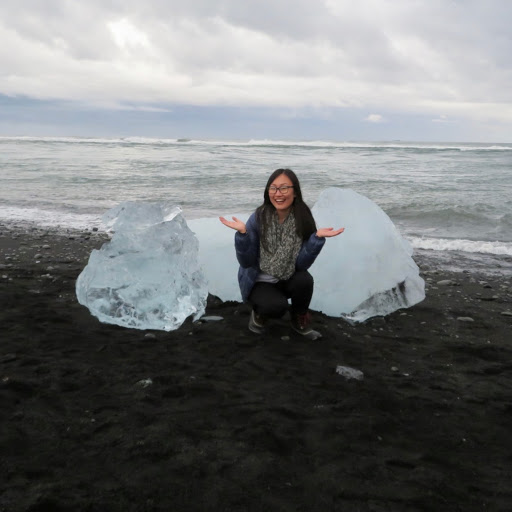Yin Wang
age ~47
from Framingham, MA
Yin Wang Phones & Addresses
- Framingham, MA
- Brighton, MA
- 80 Main St, Malden, MA 02148 • (781)3971697
Education
-
School / High School:The University of Chicago
Ranks
-
Licence:New York - Currently registered
-
Date:2002
Specialities
General Corporate • Mergers and Acquisitions • General Employment Advice • Non-Contentious Insurance Advice • Cross Border Counseling • Corporate Compliance
Lawyers & Attorneys

Yin Wang - Lawyer
view sourceLicenses:
New York - Currently registered 2002
Education:
The University of Chicago

Yin Wang - Lawyer
view sourceSpecialties:
General Corporate
Mergers and Acquisitions
General Employment Advice
Non-Contentious Insurance Advice
Cross Border Counseling
Corporate Compliance
Mergers and Acquisitions
General Employment Advice
Non-Contentious Insurance Advice
Cross Border Counseling
Corporate Compliance
ISLN:
917376151
Admitted:
1995
Name / Title
Company / Classification
Phones & Addresses
Director, President
Weikang Bio-Technology Group Company, Inc
SPRING CARPET INC
Resident Engineer
Nokia Inc
Whol Electronic Parts/Equipment · Telecommunications
Whol Electronic Parts/Equipment · Telecommunications
15 Wayside Rd, Burlington, MA 01803
5 Wayside Rd, Burlington, MA 01803
(781)9934900, (781)9935800
5 Wayside Rd, Burlington, MA 01803
(781)9934900, (781)9935800
Us Patents
-
Method For Exchanging Location-Relevant Information Using A Mobile Device With An Interactive Map Display
view source -
US Patent:20090258656, Oct 15, 2009
-
Filed:Apr 13, 2008
-
Appl. No.:12/101998
-
Inventors:Yin Wang - Medford MA, US
Tao Jin - Medford MA, US -
International Classification:H04W 4/02
-
US Classification:4554561
-
Abstract:A method is disclosed for wirelessly providing easily accessed and comprehended location-relevant information to a mobile device or web browser by displaying a map showing locations of interest. Simply by touching the map, a user can specify locations and regions used for queries and for uploading peer-to-peer information such as blogs, reviews, items for sale, etc. The device can request information, receive synchronously or asynchronously pushed responses, and display them with symbols that indicate category, age, etc. Location-aware devices can automatically specify their locations and provide location histories. Regions of interest can be adjusted according to visitation frequency, or region boundaries can simply be traced on the map. Limits can be placed on requested information and on distribution of uploaded information. Queries can use fuzzy logic, transactions can be completed using the devices, and requested information can be delivered when battery charge level and wireless link quality are appropriate.
-
Systems And Methods For Detecting Anomalies In Geographic Areas
view source -
US Patent:20210312783, Oct 7, 2021
-
Filed:Apr 1, 2020
-
Appl. No.:16/837781
-
Inventors:- Chicago IL, US
YANYAN HU - Medford MA, US
QIFAN LIANG - Quincy MA, US
KANGYAN LIU - Revere MA, US
YIN WANG - Woburn MA, US
WEIJUAN WU - Winchester MA, US
CHIA YING LEE - Medford MA, US -
International Classification:G08B 21/18
G06Q 50/26
G06N 20/00
G06N 5/04 -
Abstract:Methods for detecting anomalies in a geographic area include receiving, from an electronic computing device, expected relationship data indicating expected relationships between a plurality of entities within the geographic area; detecting the plurality of entities within the geographic area; generating observed relationship data indicating observed relationships between the plurality of entities; identifying the expected relationships between the plurality of entities based on the expected relationship data; determining that a given observed relationship between two entities of the plurality of entities is likely to represent an anomaly based on the expected relationship data; and providing an electronic notification to a safety officer, the electronic notification indicating that the given observed relationship is likely to represent the anomaly.
-
Region Proposal With Tracker Feedback
view source -
US Patent:20200097769, Mar 26, 2020
-
Filed:Sep 18, 2019
-
Appl. No.:16/575297
-
Inventors:- Vancouver, CA
Yin Wang - Malden MA, US
Xiao Xiao - Reading MA, US
Hao Zhang - Winchester MA, US
Chia Ying Lee - Medford MA, US -
Assignee:Avigilon Corporation - Vancouver
-
International Classification:G06K 9/62
G06K 9/20
G06K 9/00 -
Abstract:Methods, systems, and techniques for object detection and tracking are provided. A system may include a module configured to generate a plurality of region proposals, each region proposal comprising a part of a video frame, a CNN pre-trained for object detection, the plurality of region proposals being input to the CNN; a tracker for tracking one or more targets based on outputs from the CNN across the series of video frames and generating tracking information on the one or more targets; and a module further configured to refine the plurality of region proposals to be input to the CNN, based on the tracking information.
-
Method And System For Performing Object Detection Using A Convolutional Neural Network
view source -
US Patent:20200092463, Mar 19, 2020
-
Filed:Jul 30, 2019
-
Appl. No.:16/526711
-
Inventors:- Vancouver, CA
Yin WANG - Malden MA, US -
Assignee:Avigilon Corporation - Vancouver BC
-
International Classification:H04N 5/232
G06K 9/00
G06N 3/04
G06F 17/15 -
Abstract:Methods, systems, and techniques for performing object detection using a convolutional neural network (CNN) involve obtaining an image and then processing the image using the CNN to generate a first feature pyramid and a second feature pyramid from the first pyramid. The second pyramid includes an enhanced feature map, which is generated by combining an upsampled feature map and a feature map of the first feature pyramid that has a corresponding or lower resolution of a resolution of the enhanced feature map. The upsampled feature map is generated by upsampling a feature map of the second feature pyramid that is at a shallower position in the CNN than the enhanced feature map. The enhanced feature map is split into channel feature maps of different resolutions, with each of the channel feature maps corresponding to channels of the enhanced feature map. Object detection is performed on the channel feature maps.
-
Method And System For Classifying An Object-Of-Interest Using An Artificial Neural Network
view source -
US Patent:20190188524, Jun 20, 2019
-
Filed:Dec 14, 2017
-
Appl. No.:15/842605
-
Inventors:- Vancouver, CA
Yin Wang - Malden MA, US
Aleksey Lipchin - Newton MA, US -
Assignee:Avigilon Corporation - Vancouver
-
International Classification:G06K 9/62
G06K 9/00 -
Abstract:Methods, systems, and techniques for classifying an object-of-interest using an artificial neural network, such as a convolutional neural network. An artificial neural network receives a sample image including the object-of-interest overlaying a background and a sample background image excluding the object-of-interest and corresponding to the background overlaid by the object-of-interest. The object-of-interest is classified using the artificial neural network. The artificial neural network classifies the object-of-interest using the sample background and sample images. Prior to receiving the sample background and sample images the artificial neural network has been trained to classify the object-of-interest using training image pairs. Each of at least some of the training image pairs includes a first training image that includes a training object-of-interest overlaying a training background and a training background image excluding the training object-of-interest and corresponding to the training background.
-
Determining Online System User Eligibility For Receiving Content Using A Polygon Representing A Physical Location Associated With The Content
view source -
US Patent:20180338009, Nov 22, 2018
-
Filed:May 21, 2017
-
Appl. No.:15/600736
-
Inventors:- Menlo Park CA, US
Kevin Ventullo - Cambridge MA, US
Charles Joseph Hughes - San Francico CA, US
Yin Wang - Fremont CA, US -
International Classification:H04L 29/08
G06Q 50/00
H04W 4/02 -
Abstract:An online system determines a polygon representing a physical location associated with a content item and indexes edges of the polygon based on their positions along an axis of a map. The index is used to retrieve edges spanning a point on the axis representing a location of a client device associated with an online system user. The online system compares the positions of the point and retrieved edges on an axis perpendicular to the axis and determines whether the user is at the physical location based on the comparison. If the user is not at the physical location, a boundary surrounding the point is compared with boundaries surrounding the indexed edges to determine whether the user is within a threshold distance of the physical location. If the user is at or within the threshold distance of the physical location, the user is determined eligible to receive the content item.
Myspace

Yin Yin Wang
view source
Yin Yin Wang
view source
Yin Wang
view source
Yin Wang
view source
Yin Wang
view source
Yin Wang
view source
Yin Miki Wang
view source
Yin Ying Wang
view sourceYoutube
Googleplus

Yin Wang
Work:
Leiden University - PhD
Education:
Leiden University - Biology
Tagline:
Be myself

Yin Wang
Education:
Manhattan College - Psychology

Yin Wang
Work:
Negest

Yin Wang

Yin Wang

Yin Wang

Yin Wang

Yin Wang
Flickr
Get Report for Yin Wang from Framingham, MA, age ~47






![Being Human [1/1] Being Human [1/1]](https://i.ytimg.com/vi/GIhfs-zUNLE/0.jpg)







